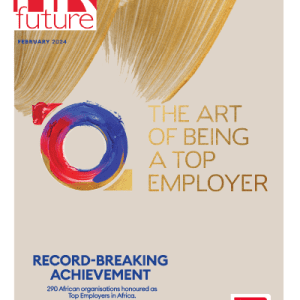Workplace dynamics are evolving drastically due to a challenging economic climate, relentless advances in technology and changing workforce attitudes. Companies have little choice but to move toward creating more collaborative environments to maximize workplace productivity and innovation.
Over the last few decades, we have seen a major shift in business and how we work. Together with a new generation of employee that is entering the workforce, with different work styles and expectations as well as technology that is advancing rapidly, it is crucial for companies in South Africa ensure their organisations are flexible and adaptable. The question is no longer ‘if’ a transformation will take place, but rather ‘how’.
Dr Marie Puybaraud, Director of Johnson Controls Global WorkPlace Innovation, shares the five principles key to the successful re-engineering of the office of the future.
Principle #1: Encourage a collaborative culture
In today’s workplace setting, establishing a culture of collaboration means giving employees, customers, suppliers and partners the tools and the flexibility they need to achieve business objectives, make good decisions, resolve issues and share knowledge effectively and efficiently.
Today’s employees expect it. Today’s complex business environment demands it.
In a global survey of workers and thought leaders conducted by Johnson Controls, 60% agreed or strongly agreed that collaboration is an important driver of:
· Employee effectiveness
· Efficiency
· Creativity and innovation
· Operational performance
While the benefits of collaboration may seem obvious, it takes strong leadership to develop a workplace culture that encourages innovation and productivity. Leaders must facilitate and foster a constraint-free environment, rather than micro-manage. And they must help others within the organisation overcome one of the greatest barriers to collaboration: Knowledge hoarding. Knowledge is put to its most productive use when shared through collaboration.
Principle #2: Evolve and adapt the workplace
To support the connectivity and mobility that collaboration requires, workplaces must embrace innovation as never before. In today’s forward-thinking work environments, more time is spent in team spaces with collaborative technologies. There is increased use of video conferencing, more use of dedicated collaboration rooms and far less time spend at desks, in cubicles or in old-style meeting rooms.
Already, newly designed, high-performance spaces allow more people to contribute actively in the decision-making process; empowering them to interact, inspiring creativity and increasing productivity.
Principle #3: Embrace advances in technology
While collaborative workspaces encourage interaction among team members within a facility, technology allows them to exchange ideas and knowledge across the city or across the globe. In fact, successful collaboration hinges on having access to the right technologies at the right time to support effective communication.
Tools such as smart phones, tablets, interactive white boards, the cloud, WebEx, Skype and other teleconferencing technologies enable improved and alternate ways of collaborative working. When discussing complex matters, being able to see the rest of the team helps build trust, confidence and breaks down barriers. Plus, the use of phone and video conferencing minimises commuting time and time spent away from the office.
Social media plays a critical role in collaboration, too. Studies show social media has the potential to increase the productivity of workers by 20% to 25%.
Principle #4: Make use of available data
Today, just 49 percent of available office space around the world is being used. And as mobile and collaborative work patterns evolve, there may be even less of a need to maintain existing real estate portfolios. Why pay to heat, light and maintain buildings that aren’t fully occupied?
Advancements in workspace technology now make it possible to detect heat and movement to determine if a space is being occupied. Real-time data gathered by these occupancy sensors can then be used to help identify spare capacity. Data collected from sophisticated building management systems is also being used to help facility teams make fast, accurate decisions on energy strategy.
When combined, these advancements in workspace and building technologies help organisations make meaningful predictions about future space and energy use.
Principle #5: Promote agility
Today’s business environment demands agility. Compressed planning horizons mean a quick response is key to competitiveness. And as businesses adapt, change shape and take on new directions and markets, real estate must be able to keep pace.
Adopting an attitude of agility also has a direct impact on productivity. When leaders support a flexible, mobile, collaborative work environment, workers are inspired to work harder and smarter.
Conclusion
Workplace strategies that encourage innovation unlock hidden value. By creating a culture of collaboration, embracing advanced technologies and promoting agility, organisations become more efficient, productive, innovative and, most importantly, deliver smarter business outcomes.
Phil Gregory, Senior Regional Executive: Johnson Controls Global WorkPlace Solutions, Middle East & Africa.













